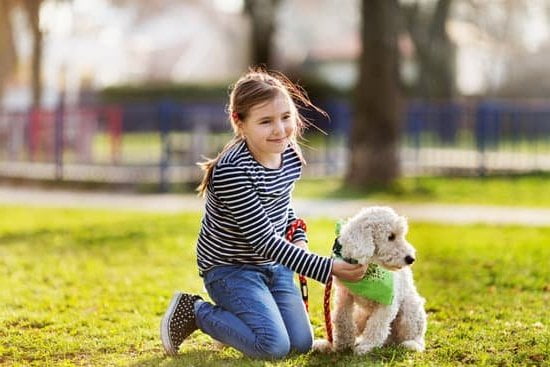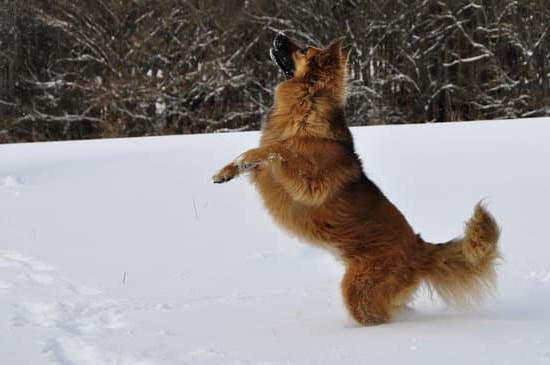Are you wondering, “how do I train a puppy mill dog to walk?” Training a puppy mill dog to walk can be a challenging yet rewarding experience for both you and your furry companion.
In this article, we will explore the effects of puppy mill life on dogs and provide valuable insights on how to build trust, introduce basic obedience training, and overcome fear and anxiety during walks. We will also discuss the importance of consistency, patience, and seeking professional help when facing training challenges.
Puppy mills are commercial breeding facilities that often prioritize profit over the well-being of the animals. Dogs raised in these environments may have limited socialization, lack of proper veterinary care, and often live in unsanitary conditions. As a result, puppy mill dogs may exhibit behavior issues such as fearfulness, anxiety, and difficulty adjusting to new experiences such as walking on a leash.
Building trust and bonding with your puppy mill dog is crucial before starting any training. Providing a safe and nurturing environment, using positive reinforcement techniques, and being patient will go a long way in helping your dog feel comfortable and secure. Basic obedience training is also essential for establishing boundaries and communicating effectively with your pup.
Walking on a leash can be especially challenging for puppy mill dogs due to their history of confinement and lack of exposure to outdoor environments. However, with the right approach and plenty of encouragement, you can help your dog learn to enjoy walks while feeling safe and secure.
Building Trust and Bonding With Your Puppy Mill Dog
Puppy mill dogs often have a difficult time trusting humans due to their traumatic experiences in the mill. Building trust and bonding with your puppy mill dog is crucial before attempting any kind of training, especially leash training for walks. Here are some tips for building trust and bonding with your puppy mill dog:
- Spend quality time together: Spend time with your puppy mill dog in a calm and quiet environment where they can feel safe and secure. Sit with them, talk to them softly, and offer gentle pets or scratches to help them feel comfortable around you.
- Respect their boundaries: Puppy mill dogs may be fearful of human touch or interaction, so it’s important to respect their personal space and not force physical contact. Let them come to you on their own terms and at their own pace.
- Use positive reinforcement: When your puppy mill dog shows signs of progress, such as approaching you willingly or wagging their tail, use treats or toys as positive reinforcement to reinforce the bond between you.
Once you have successfully built trust and formed a strong bond with your puppy mill dog, you can then begin basic obedience training to prepare them for leash walking. It’s important to remember that every dog is different, and progress may take time.
Be patient, consistent, and always approach training with compassion and understanding towards your dog’s past experiences. With the right approach and dedication, you can help your puppy mill dog overcome their fears and anxieties to become a confident walking companion.
Basic Obedience Training for Puppy Mill Dogs
Puppy mill dogs often come with a host of behavioral and emotional issues as a result of their traumatic past. Basic obedience training is crucial in helping these dogs adjust to their new environment and build a sense of security and routine. Here are some key steps to consider when starting basic obedience training for a puppy mill dog:
- Establishing a Safe Space: Before diving into obedience training, it’s important to create a safe and comfortable space for the dog to retreat to when feeling overwhelmed. This can be a designated area in your home with cozy bedding, toys, and access to food and water.
- Setting Clear Expectations: Consistency is key when it comes to setting expectations for behavior. Simple commands such as “sit,” “stay,” and “come” can help establish boundaries and promote positive behavior.
- Positive Reinforcement: Reward-based training techniques are especially effective for puppy mill dogs who may lack trust in humans. Using treats, praise, and affection can encourage good behavior and help build confidence.
Training a puppy mill dog requires patience, understanding, and compassion. It’s important to remember that these dogs may have never experienced positive human interaction before, so progress may be slow but ultimately rewarding.
Seeking Professional Help
In some cases, the trauma experienced by puppy mill dogs may require professional assistance from trainers or behaviorists who specialize in rehabilitating traumatized animals. These professionals have the expertise and experience needed to address specific issues such as fear, anxiety, or aggression that may arise during obedience training. Don’t hesitate to seek out professional help if you encounter challenges that seem beyond your capabilities.
Remember that every dog is unique, so what works for one puppy mill dog may not work for another. By remaining patient, consistent, and understanding, you can help your puppy mill dog transition from a life of fear and neglect to one of love, trust, and security.
Introducing Leash Training to a Puppy Mill Dog
Gradual Exposure
One of the first steps in introducing leash training to a puppy mill dog is to gradually expose them to the concept of wearing a collar or harness. Begin by allowing your dog to sniff and investigate the collar or harness on their own terms, then slowly introduce it by placing it around their neck for short periods of time.
This can help your dog become more comfortable with wearing a leash and prevent them from feeling overwhelmed by the new sensation.
Positive Reinforcement
Using positive reinforcement techniques is crucial when introducing leash training to a puppy mill dog. Reward your dog with treats, praise, and affection whenever they show signs of comfort or progress during leash training. This will help them associate the experience with positive feelings, making them more likely to cooperate and feel at ease during walks.
Slow Pace
When beginning actual leash training, start at a slow pace in a familiar and low-stress environment for your dog. Allow them to explore their surroundings at their own pace, using gentle guidance on the leash without pulling or forcing them along. Gradually increase the duration and distance of walks as your dog becomes more comfortable with the process.
By taking these steps, you can help your puppy mill dog overcome their fear and anxiety surrounding walking on a leash while building trust and confidence in their relationship with you as their owner. Understanding that progress may take time is essential in supporting your furry friend through this process.
Overcoming Fear and Anxiety During Walks
Puppy mill dogs have often been through traumatic experiences, which can lead to fear and anxiety, especially when it comes to new situations like going for a walk. It’s important to understand that these dogs may have never experienced the outside world before, so everything from the sights and sounds to the feeling of a leash may be overwhelming for them.
When training a puppy mill dog to walk, it’s crucial to start slow and be patient. Begin by introducing them to the leash and collar indoors in a calm and safe environment. Allow them to get used to wearing these items before attempting to take them outside. This process should be gradual, taking small steps each day.
It’s also essential to provide positive reinforcement during the training process. Use treats, praise, and encouragement to help your dog build confidence and associate walks with positive experiences. Additionally, consider using calming aids such as pheromone diffusers or calming essential oils to help ease their anxiety during walks.
| Training Tip | Details |
|---|---|
| Start Slowly | Introduce the leash and collar indoors in a calm environment |
| Positive Reinforcement | Use treats, praise, and encouragement during training |
| Calming Aids | Consider using pheromone diffusers or calming essential oils for anxiety relief |
By approaching leash training with patience, understanding, and positive reinforcement techniques, you can help your puppy mill dog overcome their fear and anxiety during walks. Remember that every dog is different, so it may take time for them to become comfortable with this new experience. If you encounter challenges along the way, don’t hesitate to seek professional help or support from trainers who have experience working with dogs that have come from difficult backgrounds.
Positive Reinforcement Techniques for Walking
One of the most effective ways to train a puppy mill dog to walk is through positive reinforcement techniques. These methods focus on rewarding your dog for good behavior, rather than punishing them for bad behavior. When it comes to walking, this can involve using treats, praise, or toys to encourage your dog to walk on a leash and follow your commands.
When using positive reinforcement, it’s important to find the right motivator for your puppy mill dog. Some dogs may respond best to treats, while others may prefer verbal praise or a favorite toy. Experiment with different rewards to see what works best for your individual dog. Once you identify their preferred reward, use it consistently during walks to reinforce their good behavior.
Another key aspect of positive reinforcement training is timing. Make sure to reward your puppy mill dog immediately after they exhibit the desired behavior. For example, if they walk calmly by your side or respond to a command, give them a treat or praise right away. This will help them make the connection between their actions and the rewards they receive.
Consistency is also crucial when using positive reinforcement techniques for walking. Be patient and persistent in rewarding your dog for walking nicely on a leash, even if progress seems slow at first. Over time, they will learn that walking politely results in positive outcomes, and this will motivate them to continue behaving well during walks.
| Positive Reinforcement Techniques | Benefits |
|---|---|
| Using treats, praise, or toys as rewards | Encourages good behavior during walks |
| Finding the right motivator for your dog | Increases their willingness to cooperate |
| Timing rewards effectively | Helps reinforce desired behavior |
The Importance of Consistency and Patience in Training
Puppy mill dogs have likely experienced a lack of consistency and may have little to no exposure to basic obedience training. Therefore, it is crucial for owners to understand the importance of consistency and patience when it comes to training these dogs, especially in teaching them how to walk on a leash.
Establishing a Routine
Consistency is key when training a puppy mill dog to walk. Establishing a routine for walks, feeding, and potty breaks can help the dog feel more secure and confident. By setting a schedule and sticking to it, the dog will start to anticipate when they are going for walks, making the training process smoother.
Positive Reinforcement
Using positive reinforcement techniques such as treats and praise can also help reinforce good behavior during walks. It’s important to be patient and consistent with rewarding the dog for walking calmly on the leash, even if progress is slow. This will ultimately help build trust between the owner and the dog.
Managing Expectations
It’s important for owners to manage their expectations when training a puppy mill dog to walk. These dogs may initially exhibit fear, anxiety, or resistance during walks due to their traumatic past experiences. It’s essential to be patient and understanding while providing encouragement and support throughout the process.
By being consistent in their approach, using positive reinforcement techniques, and managing their expectations, owners can effectively train puppy mill dogs to walk on a leash. It’s important that owners remain patient and understanding as these dogs may require extra time and support during their training journey. If necessary, seeking professional help from a certified trainer or behaviorist can also provide valuable support in addressing any training challenges that may arise.
Seeking Professional Help and Support for Training Challenges
In conclusion, training a puppy mill dog to walk can be a challenging but ultimately rewarding endeavor. Understanding the effects of their previous life in a puppy mill is crucial to establishing trust and building a strong bond with your new furry friend. Through basic obedience training and positive reinforcement techniques, you can slowly introduce leash training to your puppy mill dog.
One of the most important aspects of training a puppy mill dog to walk is overcoming their fear and anxiety during walks. This may take time and patience, but with consistency and positive reinforcement, you can help your dog feel more comfortable outside. It’s essential to remain patient throughout this process and not rush or force them into situations that may exacerbate their anxiety.
If you find yourself struggling with the training process, don’t hesitate to seek professional help and support. A professional dog trainer or behaviorist can provide valuable guidance and assistance tailored to your specific puppy mill dog’s needs. With dedication, patience, and the right support system, you can help your puppy mill dog overcome their past traumas and learn to enjoy walks as an enriching experience.
Frequently Asked Questions
How Do You Adjust a Puppy Mill Rescue Dog?
Adjusting a puppy mill rescue dog requires patience, consistency, and positive reinforcement. These dogs may be fearful, shy, or have behavioral issues, so it’s important to create a safe and calm environment for them to build trust with their new owner.
Are Puppy Mill Dogs Hard to Train?
Puppy mill dogs can be hard to train due to their past experiences and lack of socialization. They may have never been house-trained or leash-trained, and they might exhibit fear-based behaviors. With patience, understanding, and positive training methods, these dogs can still learn and thrive in the right environment.
How Do You Get an Abused Dog to Walk on a Leash?
Getting an abused dog to walk on a leash requires gradual desensitization and positive reinforcement. Start indoors with the dog getting used to the sight and feel of the leash before slowly introducing outdoor walks. It’s crucial to be patient and understanding while helping the dog overcome their fears and anxieties about walking on a leash.

Welcome to the blog! I am a professional dog trainer and have been working with dogs for many years. In this blog, I will be discussing various topics related to dog training, including tips, tricks, and advice. I hope you find this information helpful and informative. Thanks for reading!





